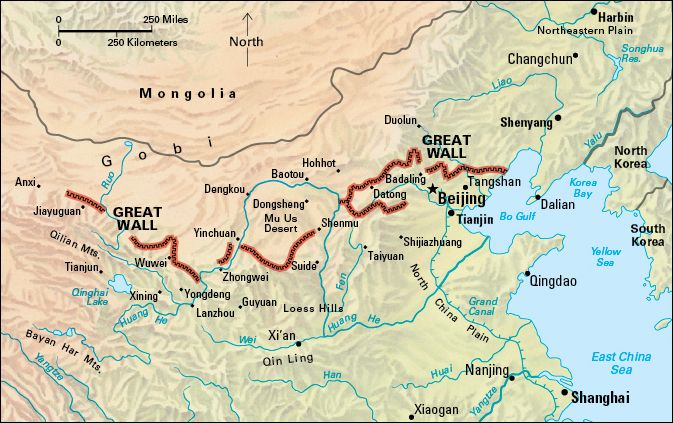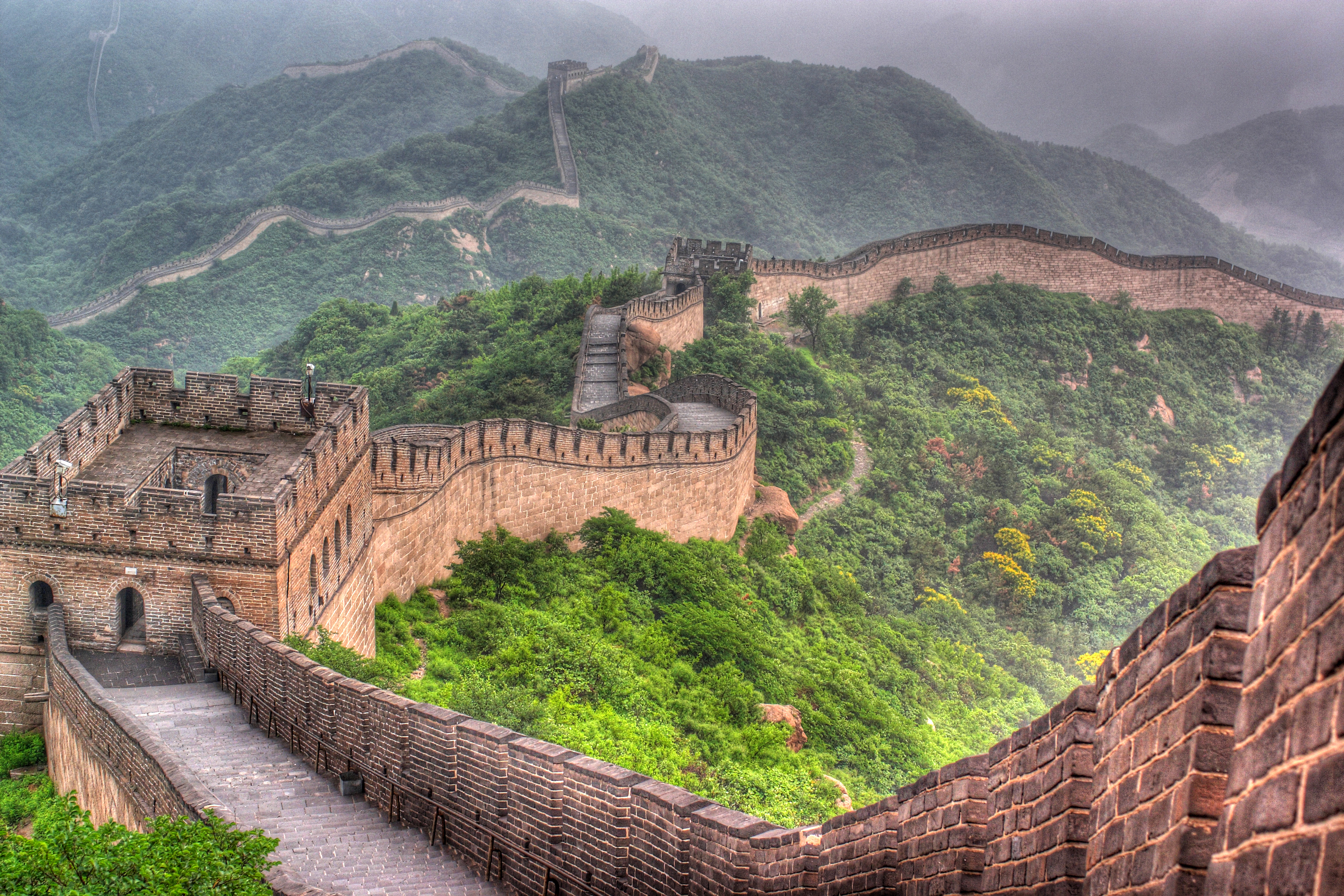Great Wall of China is the longest structure ever built. It includes sections of handmade walls as well as such natural barriers as rivers and hills. The main portion of the Great Wall that exists today stretches about 5,500 miles (8,850 kilometers) and includes about 3,890 miles (6,260 kilometers) of handmade walls. This section of the Great Wall extends from the Bo Gulf of the Yellow Sea to the Jiayu Pass in what is now Gansu Province in western China.

Over the centuries, various rulers built walls to protect their northern borders against invaders. Some of the walls stood on or near the site of the Great Wall. Most of what is now called the Great Wall dates from the Ming dynasty (1368-1644). In 2012, the Chinese government released the results of an archaeological survey of the remains of additional wall sections that predate the Ming dynasty. They determined that the full extent of the Great Wall, including these additional branches, measures about 13,170 miles (21,200 kilometers).
Some commonly held beliefs about the Great Wall—for example, that it was built all at once, or that it can be seen from the moon—are false. Nevertheless, the Great Wall is an impressive achievement that has captured the imaginations of Chinese and other people for centuries.
Description.
Parts of the Great Wall have crumbled through the years. However, much of it remains, and some sections have been restored. One of the most visited sections of the Great Wall, on Mount Badaling, near Beijing, is about 20 to 30 feet (6 to 9 meters) high. This section is about 25 feet (7.6 meters) wide at its base and nearly 20 feet (6 meters) wide at the top. Watchtowers stand about 100 to 200 yards (91 to 180 meters) apart along the wall. The towers, about 40 feet (12 meters) high, once served as lookout posts.

Great Wall of China
In the east, the wall winds through the mountainous Mongolian Border Uplands. This part of the wall has a foundation of granite blocks. It has sides of stone or brick, and the inside of the wall is filled with earth. The top is paved with bricks set in mortar. The bricks form a road that was used by the workers who built the wall and by the soldiers who defended it.
Farther west, the Great Wall runs through hilly areas and along the borders of deserts. Stone and brick were scarce in these hilly and desert areas, and so the workers used earth to build this section of the wall. They moistened the earth and pounded it to make it solid.
History.
Written records indicate that the Chinese built walls along their borders as early as the 400’s B.C. Shi Huangdi, the first emperor of the Qin dynasty (221-206 B.C.), is traditionally regarded as the first ruler to conceive of, and build, a great wall. Most of the Qin wall was north of the present-day wall, although historians debate the exact location and length of the Qin wall. Shi Huangdi built his wall by connecting new walls with older ones. Wall construction continued during later dynasties, including the Han (202 B.C.-A.D. 220) and the Sui (581-618).

By the time the Ming dynasty began in 1368, many of the walls had fallen into ruin. In response to the growing threat of Mongol attacks, the Ming government began building a major wall in the late 1400’s. This wall included most of what remains today. Like earlier ones, it protected China from minor attacks but provided little defense against a major invasion.
Through the centuries, much of the Great Wall collapsed. Some of it was deliberately destroyed during the Cultural Revolution of the 1960’s. However, in the 1980’s, the Chinese government did extensive renovations at the most visited sections. The wall no longer serves the purpose of defense, but it attracts many visitors. Tourists from around the world come to see it.
